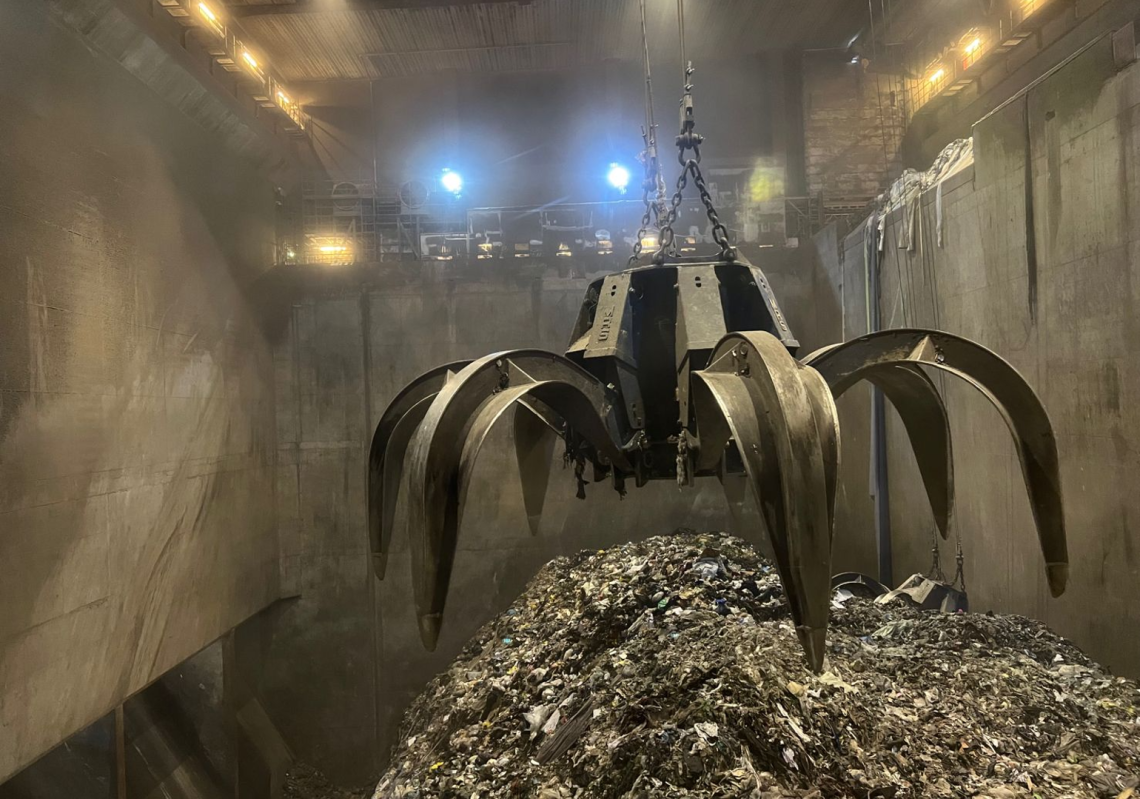One of the world’s most advanced waste-to-energy facilities played host to Engineers Australia CEO Romilly Madew AO FTSE HonFIEAust EngExec and National President Dr Nick Fleming FIEAust CPEng during a visit to Copenhagen last week.
Madew and Fleming were given a tour of Denmark’s leading Amager Bakke plant by Amager Resource Centre (ARC) Head of Communications, Nils Thor Rosted, who demonstrated the facility’s green technology on Monday 21 August.
Their visit is part of a wider European trip to strengthen Engineers Australia’s international relations and gain valuable insights into global engineering innovations and processes.
Waste-to-energy technology is well established in such European countries as Denmark, Sweden and the UK, and facilities in Western Australia developed over the past few years are creating an Australian market.
The technology diverts waste from landfill and uses it instead to produce electricity, reducing the emission of greenhouse gases such as methane.
ARC, a public company owned by five Danish municipalities, is working to implement carbon capture technology at its Amager Bakke plant, with the intention of capturing 500,000 t of carbon dioxide each year and making the energy-production process carbon neutral.
“National President Nick Fleming and I had an amazing visit to Denmark’s Amager Bakker Resource Centre,” Madew said.
“This is one of the world’s most energy efficient and eco-friendly waste-to-energy plants and to see it in action is quite remarkable.”
Community integration
Madew and Fleming’s tour encompassed not only the power generation processes, but also the public recreation facilities integrated into the site.
“Inside the plant, which reaches a height of 52 m, we watched waste pushed into a bunker and then moved into the furnace for processing,” Madew said.
“The centre has CO2 capture technology and is recognised as one of the globe’s most environmentally friendly waste plants with the highest energy efficiency — while the outside of the building features a climbing wall, public rooftop garden and a ski slope.”
One of the cleanest waste-to-energy plants in the world, Amager Bakke’s public facilities are testament to the plant’s integration into the broader urban fabric of Copenhagen.
Drawing on household and commercial refuse as well as national and imported waste, the plant took in 533,000 tons of garbage in 2022, producing electricity for 92,000 and heat for 78,000 apartments.
Carbon reduction
Following trials of carbon capture technology in 2021, ARC is now looking to make the plant even greener with a demonstration plant that captures up to four tonnes of carbon dioxide each day.
The process involves binding carbon dioxide molecules from the flue gas in an alkaline amine liquid and either storing it underground or converting it into green fuel.
Although the process requires heat, Denmark has a well-developed process for reusing energy in its district heating network— a technique that is applied to the Amager Bakke carbon capture cycle.
A full-scale carbon capture facility at the plant would see 167,000 t of carbon dioxide saved each year from fossil fuel sources and another 333,000 t of biogenic carbon dioxide — carbon dioxide from sources such as straw, potato peelings or wood pellets.
Because this carbon is already circulating between plants and the atmosphere as part of biological processes, ARC distinguishes it from the extra carbon released into the atmosphere produced by burning fossil fuels.
Waste-to-energy projects currently under development in Australia include plants in East Rockingham and Kwinana in Western Australia, and Maryvale in Victoria.
Continue the discussion about carbon capture and other technologies at Engineers Australia’s Climate Smart Engineering Conference.




Great update Jo Brad and EA. Loved this article. Cheers Cyril